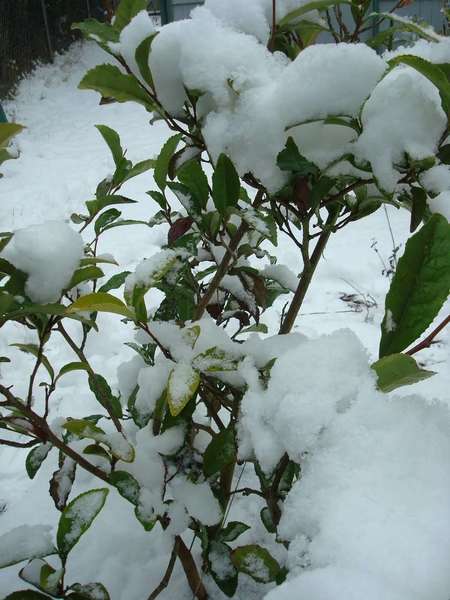Climate, Geography, and Tea Production
Wikipedia: ClimateLast Updated: Oct. 31, 2013
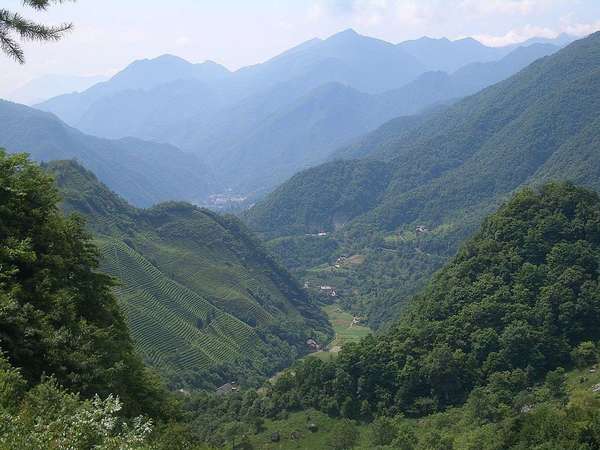 Much tea is grown in hilly or mountainous areas, in subtropical climates, like this region of Hubei, China. Photo © User:Vmenkov, Wikimedia Commons, CC BY-SA 3.0.
Much tea is grown in hilly or mountainous areas, in subtropical climates, like this region of Hubei, China. Photo © User:Vmenkov, Wikimedia Commons, CC BY-SA 3.0.To understand which regions of the world are suitable for growing tea, it is first important to understand the basic growing requirements of the tea plant. The tea plant is highly adaptable, and can grow in a broad range of conditions.
The tea plant can handle a light frost and even snow, like the picture on the left, taken in Seattle, WA, but not heavy freezes or prolonged cold winters, and, unlike some plants, it does not require a period of cold dormancy. It can thus grow from subtropical climates to tropical climates, but generally requires a fair amount of humidity and rainfall during the growing season. Although it can grow in hot tropical climates if they are sufficiently humid, the highest-quality teas mostly come from subtropical climates with some seasonality.
The seasonality of precipitation is important in influencing the quality of tea, and tea leaves harvested at different times will produce a finished product with vastly different characteristics. Seasonality is thus an asset in tea production, which explains why most of the well-known tea-producing regions have strongly seasonal climates. Seasonality can include a simple wet-dry pattern like the Asian Monsoon, or a bimodal precipitation pattern, with two distinct wet seasons and two distinct dry seasons in each year, like occurs in parts of Sri Lanka and Kenya.
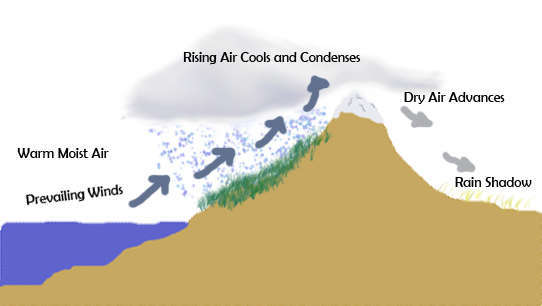 Orographic lift explains much of the influence of elevation on precipitation. Public domain illustration.
Orographic lift explains much of the influence of elevation on precipitation. Public domain illustration.Elevation influences climate
Elevation or altitude is one of the largest local or regional influencers of climate. As one climbs to a higher elevation, temperatures become more variable, rainfall generally becomes higher, but humidity becomes lower. This is due to a number of processes, one of the most important of which is called orographic lift.Orographic lift describes the phenomenon of what happens when air rises. At higher altitudes, air pressure is lower, so air expands, and the process of expansion cools the air. The capacity for air to hold water vapor depends on temperature, and is lower at lower temperatures. Thus, as air rises, it expands and cools, and it cannot hold all its moisture, so this causes clouds to form, and often causes precipitation such as rain or snow. Orographic lift explains why the windward (wind facing) side of mountains has high rainfall and the leeward (on the other side of the wind's source) side of mountains tends to be dry, a phenomenon called rain shadow. Tea, a water-loving plant, tends to be grown on the windward sides of mountain ranges.
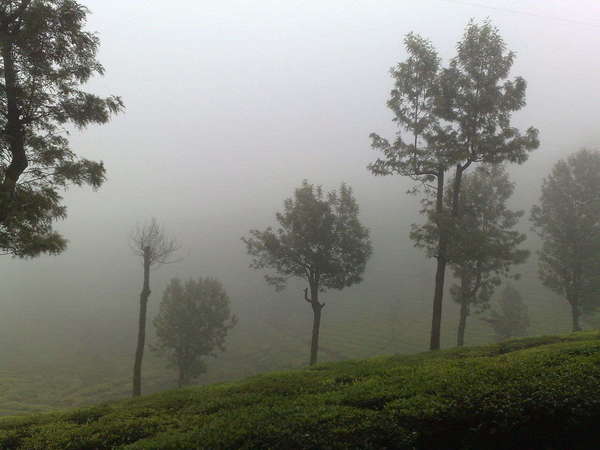 A tea plantation in Ooty, India, a region reaching well over 7000 feet in elevation. Photo by Vinrox, licensed under CC BY-SA 3.0.
A tea plantation in Ooty, India, a region reaching well over 7000 feet in elevation. Photo by Vinrox, licensed under CC BY-SA 3.0.Moisture moderates climate
Water holds heat better than any other common substance in our environment. Both bodies of water, such as the ocean or large lakes, as well as the water vapor in air, hold considerable amounts of heat. A dry region can heat up and cool off quickly, whereas regions that have more water thus tend to warm up and cool down more slowly. Water thus moderates the temperatures in a region.The phenomenon of water moderating climate explains how there can be two commercial tea operations in the United States, in a region usually considered too cold to grow tea: both are near water, one in coastal South Carolina, moderated by the Atlantic ocean, and the other in Washington State, moderated by the Pacific ocean. Similarly, in Turkey, tea is grown on the north coast, which has a mild climate moderated by the Black Sea. Iran also grows tea, in the region bordering the Caspian sea.
How climate influences flavor and other qualities of tea
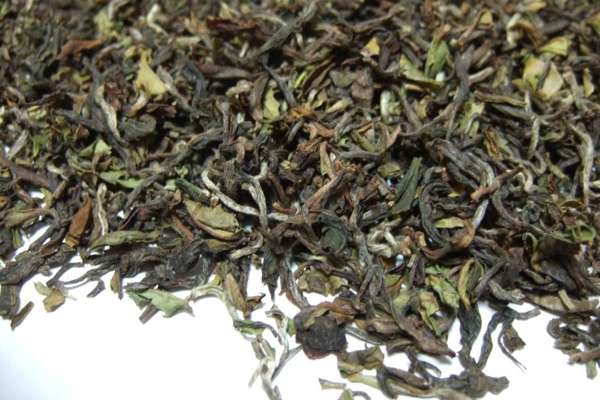 Although technically a "black tea", this high-grown first flush Darjeeling tea has a greener character, enabled by climate conditions. Photo © Whiteness (Wikimedia Commons), CC BY-SA 4.0.
Although technically a "black tea", this high-grown first flush Darjeeling tea has a greener character, enabled by climate conditions. Photo © Whiteness (Wikimedia Commons), CC BY-SA 4.0.For example, in cooler and drier air, common at high elevations, when processing tea as one would make black tea, it is possible to achieve a "hard wither", where the tea leaves dry out before they are fully allowed to oxidize. In hot, humid air, this same process is not possible. This explains why Darjeeling first flush teas sometimes have a very green character, like green tea, but why neither low elevation black teas, nor black teas produced during the rainy season, have this same character.
For example, first flush Assam teas, grown in a nearby region of Northeast India, but at a lower altitude, tend to still be darker. Similarly, second flush Darjeeling teas are also darker, and monsoon or rains teas are even more so.


